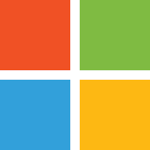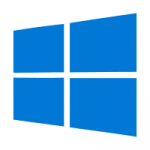 Forty-seven security vulnerabilities in Acrobat Reader — many of them flagged as Critical — prompted Adobe to release a fixed version on May 14.
Forty-seven security vulnerabilities in Acrobat Reader — many of them flagged as Critical — prompted Adobe to release a fixed version on May 14.
Acrobat Reader comes in a few different flavours, but the one targeted at regular users is Acrobat Reader DC, which is also sometimes refererred to as Acrobat Reader DC (Continuous Track). See the post Adobe Acrobat Reader updates from 2018Feb16 for more information about Acrobat/Reader variants.
Acrobat Reader DC version 2018.011.20040 contains fixes for all forty-seven vulnerabilities documented on the associated security bulletin.
You can install the latest Reader by visiting the Get Acrobat Reader page on Adobe’s web site. Don’t forget to disable any checkboxes for installing optional software. When I installed Acrobat Reader DC 2018.011.20040 from that page earlier, there were three such options, all enabled by default:
- Install the Acrobat Reader Chrome Extension
- … install the free McAfee Security Scan Plus utility …
- … install McAfee Safe Connect …
Unless you know for sure you want to use those products, it’s best to avoid them.
 boot13
boot13 The latest version of Chrome fixes four security bugs. The Chrome 66.0.3359.170
The latest version of Chrome fixes four security bugs. The Chrome 66.0.3359.170  Mozilla is making things easier for IT folks with
Mozilla is making things easier for IT folks with  Spring has sprung, and with it, a load of updates from Microsoft and Adobe.
Spring has sprung, and with it, a load of updates from Microsoft and Adobe. Another big update for Windows 10 is scheduled to start rolling out to all Windows 10 computers on May 8. Microsoft is calling this one the
Another big update for Windows 10 is scheduled to start rolling out to all Windows 10 computers on May 8. Microsoft is calling this one the  Normally when Google cancels a service, it’s annoying and baffling, but we grumble and find an alternative.
Normally when Google cancels a service, it’s annoying and baffling, but we grumble and find an alternative.  The only major browser that still officially supports Java is Internet Explorer, although there are workarounds for some of the other browsers. For example, you can switch to
The only major browser that still officially supports Java is Internet Explorer, although there are workarounds for some of the other browsers. For example, you can switch to  Microsoft’s contribution to our monthly headache starts with a post on the TechNet MSRC blog:
Microsoft’s contribution to our monthly headache starts with a post on the TechNet MSRC blog: